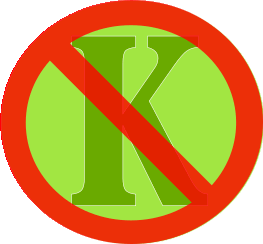Velvet Beet Puree With Chopped Yam |
![Save this Recipe. Save this Recipe]() Save Save
How to Make Velvet Beet Puree with Chopped YamSERVINGS: 2
INGREDIENTS
| 1 c | |
| 2 pinch | |
| 2 tbsp | |
| 1/4 tsp | |
| 1 clove | |
| 2 pinch | |
| 1 tbsp | |
| 1 c | |
| 1 c | |
| 1/4 c | |
PREPARATION OF THIS HEALTHY RECIPE
1. Saute the onions in the coconut oil.
2. Then add garlic, fennel, and black pepper. Continue sauteing for thirty seconds.
3. Add the remaining ingredients and boil until yams and beets are soft.
4. Blend til smooth and creamy. Enjoy!
How Does This Ayurvedic Recipe Improve Wellness?
CLINICAL AYURVEDIC REVIEW
Root vegetables ground Vata but aggravate Kapha. Great for winter season. Beets, yams, and other red or orange colored food helps build the blood. WHAT IS VELVET BEET PUREE WITH CHOPPED YAM?Inky velvet blended beets with fennel and sweet orange yams. Or take a completely different flavor route with warmer spices like cinnamon and cloves. Serve with rice and greens on the side.
AYURVEDA'S GUIDE TO VITALITY & WHOLESOME NOURISHMENT
Your Ayurvedic diet is tailored to your individual body and your specific imbalances.
With an Ayurvedic diet you feel joy and satisfaction because what you are eating truly nourishes and balances you.
Disease results from diets and lifestyles that are incompatible with your nature.
By eating a personalized diet matched to your body, you experience optimal health.
See How it Works.
Is Velvet Beet Puree with Chopped Yam Good for My Ayurvedic Diet?
Find out by taking this free, easy quiz.
You'll learn your body type, and whether 'Velvet Beet Puree with Chopped Yam' is a good fit.
Complete the basic quiz in 1 minute, or go deeper with additional quizzes at your own leisure to learn more about your body.
See a complete list of all biocharacteristics.
INCREASES![Guna Help]()
Increases These Biocharacteristics (Gunas)
Functional Ayurveda helps you assess imbalances through 20 main biocharacteristics
(gunas).
Aggravating these characteristics weakens your body and causes imbalance.
By knowing which characteristics are habitually imbalanced in your body, you will be able to identify and correct imbalances before you get sick.
Every characteristic has an opposite which balances it (i.e. hot balances cold).
You restore balance by favoring diet and lifestyle choices that increase the opposite characteristic.
Learn More
| EASY ![Easy Easy]() ABOUT EASY BIOCHARACTERISTIC ABOUT EASY BIOCHARACTERISTIC
Easy refers to anything easy to digest, or digests quickly.
LEARN MORE ABOUT EASY CLEAR ![Clear Clear]() ABOUT CLEAR BIOCHARACTERISTIC ABOUT CLEAR BIOCHARACTERISTIC
Clear refers to anything that cleanses or flushes out wastes, or that digests ama.
LEARN MORE ABOUT CLEAR LIQUEFIED ![Liquefied Liquefied]() ABOUT LIQUEFIED BIOCHARACTERISTIC ABOUT LIQUEFIED BIOCHARACTERISTIC
Substances that thin fluids (lower viscosity of blood plasma). These may include blood thinners or mucolytic herbs.
LEARN MORE ABOUT LIQUEFIED | TASTES![Taste Help]()
The 6 Tastes
Taste is used to sense the most basic properties and effects of food.
Each taste has a specific medicinal effect on your body.
Cravings for food with certain tastes indicate your body is craving specific medicinal results from food.
Taste is experienced on the tongue and represents your body's reaction to foods.
Sweet taste causes physical satisfaction and attraction whereas bitter taste causes discomfort and aversion.
Kapha should use less sweet taste while Vata and Pitta would benefit from using more sweet taste.
One of the first signs of illness is that your taste and appetite for food changes.
The six tastes are sweet, sour, salty, pungent, bitter, and astringent.
Do you crave foods with any of the tastes below?
Learn More
| SWEET ![Sweet Sweet]() ABOUT SWEET BIOCHARACTERISTIC ABOUT SWEET BIOCHARACTERISTIC
Sweet refers to anything builds tissue, including macronutrients such as carbohydrates, proteins and fats.
LEARN MORE ABOUT SWEET | DOSHAS![Dosha Help]()
The Three Doshas / Body Types
According to the biocharacteristic theory of medicine,
people tend to get sick, over and over again, due to habitual causes and imbalances that are unique to the person.
Your body type summarizes this tendency, showing you the 'type' of conditions and imbalances that frequently challenge your health & wellness.
Using body type, you can also identify remedies likely to improve your strength and resiliency.
Your body type identifies physical and mental characteristics as well as your personal strengths and weaknesses.
The calculation of your body type is based on your medical history.
The 3 functional body types
(doshas),
are Catabolic (Vata), Metabolic (Pitta), and Anabolic (Kapha).
Catabolic individuals tend to break down body mass into energy. They are easily stimulated, hyperactive, underweight and dry.
Metabolic individuals tend to burn or use energy. They tend to be rosy-cheeked, easily irritated, focused, driven, and easily inflamed.
Anabolic individuals tend to store energy as body mass. If they store too much energy, they could gain weight easily and have congestion. Anabolic people tend to be stable and grounded.
Learn More
| |
|
Medicinal Benefits, Uses & Herbal Actions of Velvet Beet Puree with Chopped Yam ![Help]() Experiences are Personal
Experiences vary according to the person and constitution. Individual results may vary.
The list of herbal-actions below has not be approved by the FDA and should not be used to treat a medical condition.
, Stimulant Laxative STIMULANT-LAXATIVE
Stimulant laxatives induce bowel movements by stimulating peristaltic movement (the contraction of smooth muscle in the intestines). They are effective when used on a short-term basis. On a long-term basis, they can create dependency. Aka irritant laxativ
SEE ALL 'STIMULANT-LAXATIVE' FOODS / HERBS , Nerve Relaxant Grounding NERVE-RELAXANT-GROUNDING
Encourages feelings of stability and heaviness. Makes you feel settled, mentally relaxed. Mildly sedates the nervous system to ease stress. Can bring a spacey or anxious person back to earth. Reduces agitation, irritation, stress and racing thoughts.
SEE ALL 'NERVE-RELAXANT-GROUNDING' FOODS / HERBS , Vasodilator VASODILATOR
A vasodilator is an herb that widens the blood vessels by the relaxation of smooth muscle cells within the vessel walls, thereby increasing circulation systemically or to a local area.
SEE ALL 'VASODILATOR' FOODS / HERBS , Blood Tonic BLOOD-TONIC
An herb that produces more blood cells in the body, or otherwise improves blood cell quality or hemoglobin content. Helpful for anemia and other types of deficiency.
SEE ALL 'BLOOD-TONIC' FOODS / HERBS , Alterative ALTERATIVE
Restores the proper function of the body by cleansing the blood and balancing blood chemistry. In Ayurveda terms, they pacify Pitta in rakta. They were traditionally used to revitalize and detoxify after a long winter.
SEE ALL 'ALTERATIVE' FOODS / HERBS Livotonic LIVOTONIC
An herb that strengthens the liver. It is helpful for people with a history of substance abuse, chronic liver issues from hepatitis and hemolytic anemias. Generally, liver tonics are oily, cool, sweet, mildly sour, or contain beta-carotene.
SEE ALL 'LIVOTONIC' FOODS / HERBS , Cholagogue CHOLAGOGUE
Cholagogues stimulate the production & release of bile from the liver & gallbladder. This refreshes and cleanses these organs, as well as increases bile in the small intestines.
SEE ALL 'CHOLAGOGUE' FOODS / HERBS |
Foods with a Similar Nature to Velvet Beet Puree with Chopped Yam
Beets
Beets has these Actions in Common
Satisfies-stomach, Stimulates-energy, Cholagogue, Livotonic, Nutritive, Skin-tonic, Vasodilator, Alterative, General-laxative, Muscle-relaxant, Relaxes-eyes, Stimulant-laxative, Warms-abdomen, Blood-tonic, Irritates-kidney, Nerve-relaxant-grounding
LEARN MORE
Garlic
Garlic has these Actions in Common
Diaphoretic, General-laxative, Stimulant-laxative, Alterative, Diuretic, Irritates-throat, Vasodilator, Cholagogue, Galactagogue, Makes-you-tired
LEARN MORE
Tahini
Tahini has these Actions in Common
Blood-tonic, Nerve-relaxant-grounding, Skin-tonic, Galactagogue, Nutritive, Stimulates-energy, General-laxative, Satisfies-stomach, Warms-abdomen
LEARN MORE
Horseradish
Horseradish has these Actions in Common
Warms-abdomen, Cardiac-stimulant, Diuretic, Irritates-throat, Cholagogue, Flushes-sinuses, Vasodilator, Diaphoretic, General-laxative
LEARN MORE
Wasabi
Wasabi has these Actions in Common
General-laxative, Warms-abdomen, Cardiac-stimulant, Diuretic, Irritates-throat, Cholagogue, Flushes-sinuses, Vasodilator, Diaphoretic
LEARN MORE
Garlic (raw)
Garlic (raw) has these Actions in Common
Cardiac-stimulant, Diuretic, Stimulant-laxative, Cholagogue, Flushes-sinuses, Vasodilator, Diaphoretic, General-laxative, Warms-abdomen
LEARN MORE
Mustard Seed
Mustard Seed has these Actions in Common
Diaphoretic, Irritates-throat, Vasodilator, Diuretic, Muscle-relaxant, Warms-abdomen, Cardiac-stimulant, Flushes-sinuses, Stimulates-energy
LEARN MORE
Pumpkin
Pumpkin has these Actions in Common
Livotonic, Nerve-relaxant-grounding, Satisfies-stomach, Makes-you-tired, Nutritive, Alterative, Muscle-relaxant, Relaxes-eyes
LEARN MORE
Sesame Seeds
Sesame Seeds has these Actions in Common
Galactagogue, Nutritive, Stimulates-energy, General-laxative, Satisfies-stomach, Blood-tonic, Nerve-relaxant-grounding, Skin-tonic
LEARN MORE
Tofu
Tofu has these Actions in Common
Irritates-kidney, Nutritive, Diuretic, Makes-you-tired, Satisfies-stomach, Galactagogue, Nerve-relaxant-grounding, Skin-tonic
LEARN MORE
Popped Amaranth
Popped Amaranth has these Actions in Common
Alterative, Muscle-relaxant, Relaxes-eyes, Blood-tonic, Nerve-relaxant-grounding, Satisfies-stomach, Diuretic, Nutritive
LEARN MORE
Herb Supplements with a Similar Nature to Velvet Beet Puree with Chopped Yam
Punarnava
Punarnava has these Actions in Common
Nerve-relaxant-grounding, Stimulates-energy, Vasodilator, Alterative, Blood-tonic, Cardiac-stimulant, Cholagogue, Diuretic
LEARN MORE
Holy Basil Leaf (Tulsi)
Holy Basil Leaf (Tulsi) has these Actions in Common
Diaphoretic, Diuretic, Muscle-relaxant, Nerve-relaxant-grounding, Stimulates-energy, Vasodilator, Blood-tonic, Cardiac-stimulant
LEARN MORE
Chyavanprash Nutritive Jam
Chyavanprash Nutritive Jam has these Actions in Common
General-laxative, Nutritive, Stimulant-laxative, Stimulates-energy, Alterative, Blood-tonic, Cardiac-stimulant
LEARN MORE
Amalaki
Amalaki has these Actions in Common
Relaxes-eyes, Skin-tonic, Stimulates-energy, Alterative, Blood-tonic, General-laxative, Nutritive
LEARN MORE
Ashwagandha
Ashwagandha has these Actions in Common
Diuretic, Galactagogue, Muscle-relaxant, Nerve-relaxant-grounding, Nutritive, Alterative, Blood-tonic
LEARN MORE
Anantamul
Anantamul has these Actions in Common
Alterative, Blood-tonic, Diaphoretic, Diuretic, Galactagogue, Skin-tonic
LEARN MORE
Bhumyamalaki
Bhumyamalaki has these Actions in Common
Livotonic, Skin-tonic, Alterative, Cholagogue, Diuretic, General-laxative
LEARN MORE
Milk Thistle
Milk Thistle has these Actions in Common
Diuretic, Galactagogue, Livotonic, Alterative, Cardiac-stimulant, Cholagogue
LEARN MORE
Manjistha
Manjistha has these Actions in Common
Diaphoretic, Diuretic, Skin-tonic, Vasodilator, Alterative, Blood-tonic
LEARN MORE
Belly breathing
Belly breathing has these Actions in Common
General-laxative, Muscle-relaxant, Stimulates-energy, Alterative, Blood-tonic, Cardiac-stimulant
LEARN MORE
Pennyroyal
Pennyroyal has these Actions in Common
Cardiac-stimulant, Cholagogue, Diaphoretic, Diuretic, Muscle-relaxant, Vasodilator
LEARN MORE
![]()
Joyful Belly is a recognized school of biocharacteristics medicine.
Eat Well for Life With Ayurveda: Balance Your Dosha
Love our recipes? Discover how to balance your diet for only $35 with this popular short course.
GET THE ECOURSE
![About John Joseph Immel]()
About the Author
John Immel, the founder of Joyful Belly, teaches people how to have a
healthy diet and lifestyle with Ayurveda biocharacteristics.
His approach to Ayurveda is clinical, yet exudes an ease which many find enjoyable and insightful.
John also directs Joyful Belly's School of Ayurveda,
offering professional clinical training in Ayurveda for over 15 years.
John's interest in Ayurveda and specialization in digestive tract pathology was inspired by a complex digestive disorder acquired from years of international travel,
as well as public service work in South Asia.
John's commitment to the detailed study of digestive disorders reflects his zeal to get down to the roots of the problem.
His hope and belief in the capacity of each & every client to improve their quality of life is nothing short of a personal passion.
John's creativity in the kitchen and delight in cooking for others comes from his family oriented upbringing.
In addition to his certification in Ayurveda, John holds a bachelor's degree in mathematics from Harvard University.
John enjoys sharing Ayurveda within the context of his Catholic roots,
and finds Ayurveda gives him an opportunity to participate in the healing mission of the Church.
Jesus expressed God's love by feeding and healing the sick.
That kindness is the fundamental ministry of Ayurveda as well.
Outside of work, John enjoys spending time with his wife and 6 kids, and pursuing his love of theology, philosophy, and language.
Read more
Comments & Impressions of 'Velvet Beet Puree With Chopped Yam'
Do you like 'velvet beet puree with chopped yam'?
Why or why not?
What makes it unique? Is there something else you'd like to know about 'velvet beet puree with chopped yam'?
![full start review]() ![full start review]() ![full start review]() ![full start review]() ![full start review]() (5.00 out of 5 stars) 1 rating, 273 likes (5.00 out of 5 stars) 1 rating, 273 likes![blank start review]() ![blank start review]() ![blank start review]() ![blank start review]() ![blank start review]() Sign in to review this recipe Sign in to review this recipe
I would like to know the proportions for the cinnamon and cloves. Are the cloves to be eaten? Thanks for the reply to my last question.
- pamela, Portland, OR , 12-05-11 ( Reply) Dear Pamela - You could try 1/4tsp each of cinnamon and cloves. Generally, you remove the cloves from your plate while eating. Thanks for asking! -John
A smooth, velvety, heavenly delight! It proves that you don't need tomatoes to get red richness. I used a sweet potato, since I didn't have yams in the house.
|

 Save
Save




 1 rating, 273 likes
1 rating, 273 likes




 Sign in to review this recipe
Sign in to review this recipe











 Print
Print
 On MeWe
On MeWe On Pinterest
On Pinterest On Facebook
On Facebook On Twitter
On Twitter On WhatsApp
On WhatsApp On Email
On Email












